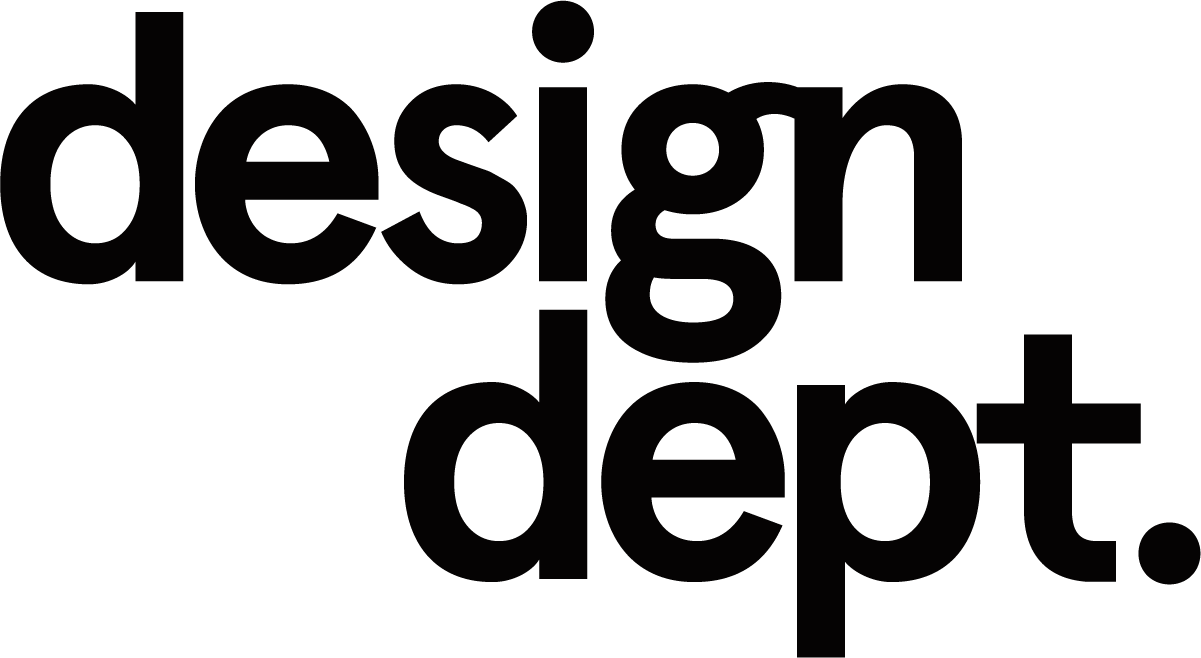
As AI slides into the spotlight across our industry and headcounts continue to shrink, the need for designers to make the connection between design and business is more critical than ever. Many leaders understand this, but are unsure about how or where to begin helping their teams grow their knowledge and skills to collaborate more effectively with product partners.
After years of teaching business fundamentals to designers, we’ve created our Business Impact Model. This model defines five stages that designers cycle through on their way to connecting their work to business value. It’s a tool for leaders and individual contributors alike.
Like any framework, team maturity isn’t one size fits all, and growth isn’t always linear. Expect to see variance – in teams across your org, in individuals at different stages of growth, and even in how designers work with individual cross-functional partners.
how to use the design team impact model
For individual contributors:
Evaluate where you’re at now
Identify where you want to grow
For people leaders:
Assess your team’s maturity and map a path for growth
Communicate your vision for the role of design at your company with other leaders
Coach and set developmental goals for individuals on your team

STAGE 1
Opposed
Designers actively disagree with the notion that design needs to support business outcomes, or feel that optimizing for business outcomes comes at an unacceptable cost to users.
Signs you’re in this stage
Common practices
Designers are often frustrated that other functions don’t value design highly enough.
Designers articulate project impact in terms of user impact, they struggle to speak to business impact.
Designers aren’t interested in the business side of their work, they want to focus solely on craft.
Design’s position in the organization
Design is not seen as serving a strategic role in the organization. Other functions believe that design exists to produce assets, and that is its only value.
Designers don’t get invited to critical meetings.
Designers receive briefs after strategic reviews are finalized. They receive solutions rather than problems to solve.
Engagement in strategy
Product (or other business function) drives decisions and prioritization with limited design involvement.
Designers’ visions for the future and ideas for the product are either siloed within design or not taken seriously by other functions.
Contributions to measures of success
The design org doesn’t engage in creating or owning business metrics.
The team may have UX metrics that don’t align with or directly contradict business metrics.
Impact and obstacles
Level of craft possible
Craft is constrained by product prioritization and the extent to which PMs are invested in quality.
There isn’t agreement across functions on the definition of a good user experience. As a result, designers are often frustrated by the compromises they make in shipped experiences.
Barriers
Designers hold a mindset that design and business are opposed.
Designers want product partners to make the effort to understand design before they make the effort to understand the business.
The design team’s emphasis on craft and quality limits individuals’ understanding of design’s business value.
Getting to the next stage
Learning and development required
Designers need to undergo a mindset shift to realize they can understand, shape, and align with the business without losing touch with their creative identity.
HOW Design leaders can support their teams
Get real with the team about the fact that business success has a direct impact on them: if the company doesn’t succeed, they don’t have jobs.
Share case studies where the intersection of design and business resulted in a win for both business and users.
STAGE 2
Reconciling
Designers are coming around to understanding the importance of business impact. They’re getting curious about what they need to learn in order to productively engage in the intersection of business and design.
Signs you’re in this stage
Common practices
When prompted, designers can articulate where business impact and outcomes for users intersect. They practice speaking to both business and user needs in critique and reviews.
The team creates and uses shared business terminology, understanding, and tools in team meetings and rituals.
Designers may not feel qualified or informed enough to give input on where to increase business impact.
Design’s position in the organization
Designers are invited to critical meetings on an ad hoc basis.
Designers are brought into strategic reviews in the final stages.
Engagement in strategy
Designers are curious and are actively expanding their knowledge of the business, in partnership with cross-functional peers. As a result, they are more involved in how decisions are made and how priorities are set at the feature level.
Designers create visions for the future of the product, but struggle to get other functions to engage in them.
Contributions to measures of success
Designers are interested in business metrics; they’re starting to learn how metrics are tracked and what they mean.
Designers may not yet know how to concretely connect their work to business metrics.
Impact and obstacles
Level of craft possible
Craft level is still constrained by product prioritization and the extent to which PMs are invested in quality.
The design team is starting to understand how their definition of a good user experience drives business outcomes, but has not established alignment across functions on that definition.
Barriers
Knowledge of basic business acumen is limited.
Designers lack a foundational understanding of how their company’s business works and how design creates business value.
Designers don’t understand business metrics well enough to contribute to their development and prioritization.
Designers need more practice and confidence speaking the language of the business.
Getting to the next stage
Learning and development required
Designers need to expand their understanding of business, specifically:
Business models and ecosystems
Financial statements
Competitive advantage and strategy analysis
Product lifecycle stages and key business metrics
Prioritization frameworks
Logic-driven communication
HOW Design leaders can support their teams
Hold space for team to practice applying business acumen and learnings in a psychologically safe environment (e.g. review your company or department P&L together).
Require all work to be presented through a shared business and user lens.
Articulate how design contributes to measures of business success and incorporate those into design brief templates.

STAGE 3
Contributing
Designers are capable of factoring business impact into design decisions. They are deepening their engagement with business functions, but are often still reactive to strategic direction.
Signs you’re in this stage
Common practices
Design briefs consistently include both user outcomes and business impact, and designers speak confidently to both when presenting their work.
Designers regularly articulate both user experience and business trade offs when making design decisions.
Design’s position in the organization
Designers are regularly invited to critical meetings and strategic reviews, although their position relative to cross-functional leads may not be formalized.
Engagement in strategy
Designers have visibility into strategy and prioritization. They influence decisions at the feature level.
Designers ask questions that push the thinking of cross-functional partners.
Designers propose ideas that are relevant to the stage of their product.
Designers create visions for the future of the product, but may struggle to ground them in the realities of the market.
Contributions to measures of success
Designers at all levels understand key business metrics and track how their work contributes to them.
Designers can articulate the metrics their work will affect and they proactively track impact.
Impact and obstacles
Level of craft possible
Other functions better understand the business value of quality user experience (and what it looks like). As a result, they’re starting to advocate for users alongside designers.
Designers can raise the bar on the quality of experiences shipped on a project-by-project basis.
Barriers
Designers don’t see themselves as leaders of people and process, in addition to craft leaders.
Designers have room for improvement in their awareness and analysis of the company’s competitive landscape.
Designers’ ability to demonstrate to cross-functional partners that they can make valuable contributions to business strategy is inconsistent.
Getting to the next stage
Learning and development required
Designers need to develop skills to:
Deepen self-awareness
Communicate effectively
Facilitate cross-functional decisions
Build effective alliances
Influence across the organization
Designers need to expand their understanding of:
Monetization and pricing strategy
Retention and engagement funnels
Experimentation and testing
Analyzing data and metrics
HOW Design leaders can support their teams
Ensure the team is developing strategic alliances with cross-functional partners. Assign partnerships based on gaps.
Brainstorm open questions and knowledge gaps with team to target further learning.
Highlight stories of design partnership at the company level.
Coach designers on how to increase their influence.
Find opportunities for designers engage with strategy in a way that pushes them outside of their comfort zones.

STAGE 4
Partnering
Designers are equipped, informed, and strategic in how they balance user and business needs. As a result, they have earned their “seat at the table”—they are considered an equal partner to product and other business stakeholders.
Signs you’re in this stage
Common practices
Designers are opinionated on how their function helps the company and product lines compete in the market, in alignment with business strategy.
Designers pick their battles wisely when they have to trade off user outcomes for business impact.
Design’s position in the organization
Designers are considered equal partners to product, engineering, and other cross-functional leads at most levels in the org chart. Cross-functional partners share responsibility for the decisions they make.
Designers are invited to critical meetings by default and are involved in planning from the start of the process.
Other functions advocate for investments in user outcomes and consider user impact in decision-making.
Engagement in strategy
Designers contribute to the formation of business strategy and priorities and build cross-functional consensus around vision at the product level.
Design’s collaboration with cross-functional partners results in better decisions for the company’s success.
Designers have earned the credibility required to justify investments in design work that is hard to measure.
Contributions to measures of success
Formation of OKRs, KPIs, and other goals are a collaborative process, to which designers contribute as much as their product and engineering counterparts.
Qualitative data and UX-centric metrics are incorporated into KPIs, in alignment with business metrics.
Design leaders take full accountability for the impact of their projects. They translate successes and failures into implications on business strategy and recommendations for adjusting immediate priorities.
Impact and obstacles
Level of craft possible
The design team can raise the bar on quality across the product overall, influencing how other functions apply rigor to shipped experiences.
The company is starting to make investments in design-led projects, in alignment with business strategy and product lifecycle stage.
Barriers
Designers are making good business decisions in collaboration with cross-functional partners, but need more time and opportunities to establish a consistent track record.
Designers need more practice and confidence in taking the lead on setting strategy and seeing it through to execution.
Getting to the next stage
Learning and development required
Designers need to develop skills to:
Build strategic alliances across the organization
Present work confidently to, and create alignment with senior leaders
Designers should deepen their understanding of:
Market analysis
Growth strategy
Marketing strategy
HOW Design leaders can support their teams
Deepen knowledge and understanding of nuances of your business.
Encourage design to co-present with partners.
Identify opportunities for senior designers and managers to influence business/executive leaders.
Proactively generate opportunities for the team to identify new business opportunities, market shifts, and trends.
Expand team capabilities and partnerships, like market research and data.
Shift hiring practices to ensure you've leveled up expectations.

STAGE 5
Driving
Designers approach work as both craftspeople and business leaders; they see business success as design success. They are actively innovating at the intersection of design and business.
Signs you’re in this stage
Common practices
Designers initiate cross-functional projects, drive them through to execution, and report on impact.
Design leaders are influencing audiences outside of the company: like the board, the press, and industry leaders.
Design’s position in the organization
Design is considered an essential cross-functional stakeholder in critical business decisions.
Design is broadly recognized as a competitive advantage for the company.
Design is represented at all leadership levels, including the executive team, with opportunities to influence leaders at the highest level of the organization.
Engagement in strategy
Designers facilitate critical business decisions.
Design leaders pitch relevant opportunities for the business, which are grounded in business strategy and market dynamics.
Designers create and build cross-functional consensus around vision at the company level.
Contributions to measures of success
Design leaders measure user impact as a leading indicator for business success, and create alignment around those measures.
Impact and obstacles
Level of craft possible
Top of class experiences are not only possible, but strategically important. Other functions prioritize product quality, resulting in highly polished shipped experiences.
Design influence extends beyond the product organization. Designers are able to design the organization and business as much as the product itself.
Barriers
The company may start to take the impact of design for granted over time and, as a result, not continue to invest, slipping back into previous stages.
Keep driving
HOW Design leaders can support their teams
Invest in executive development and coaching.
Carve out space for future market exploration and innovation.

further reading
FOR INDIVIDUAL CONTRIBUTORS
Why designers need to business
We focus so much of our time, energy, and effort on building great experiences because that is what we love, that’s where our identity lies. But we are only able to design if the business is successful.
Read full article →
FOR ALL LEADERS
The creative identity crisis
A realization about why learning business basics scares the bleep out of designers, and what to do about it.
Read full article →
FOR ALL LEADERS
Design vs
business
Finding an intersection between what we aspire to design and the realities of the business we support.
Read full article →











